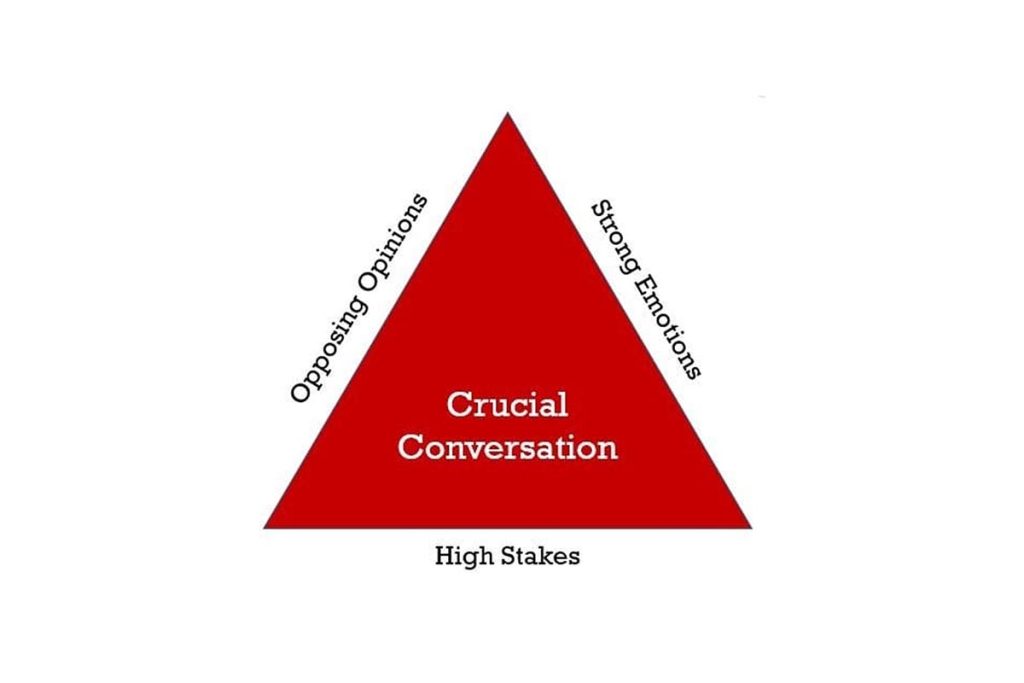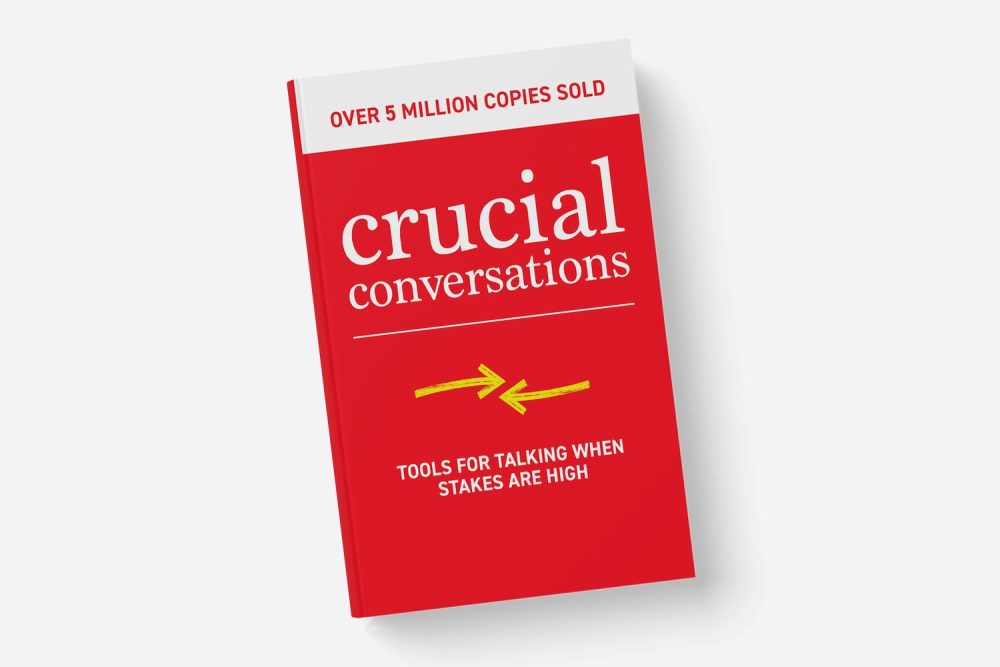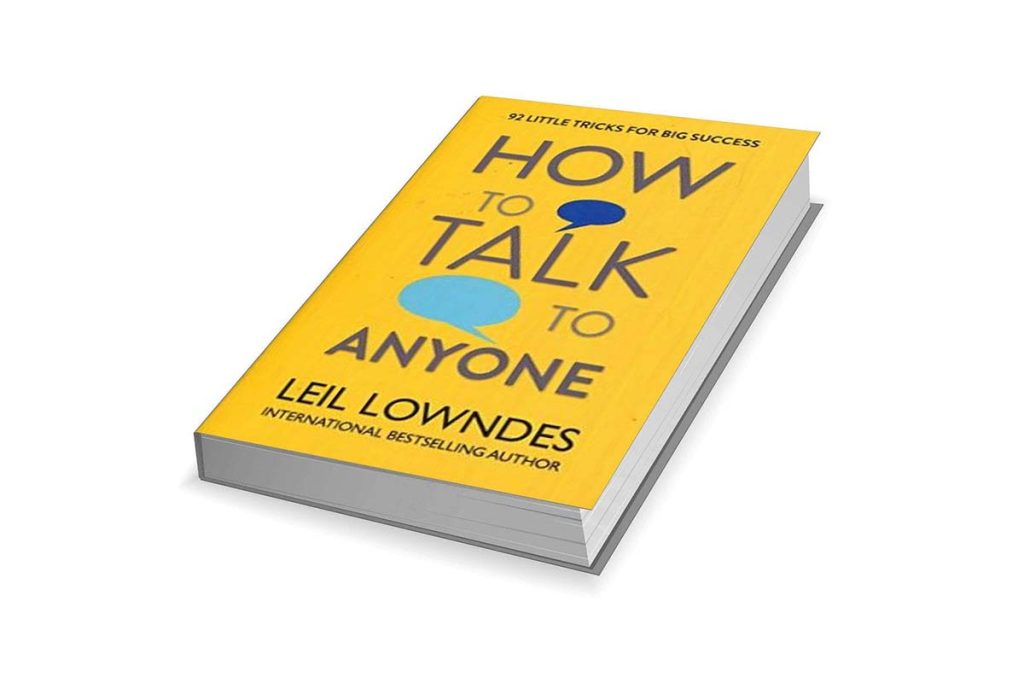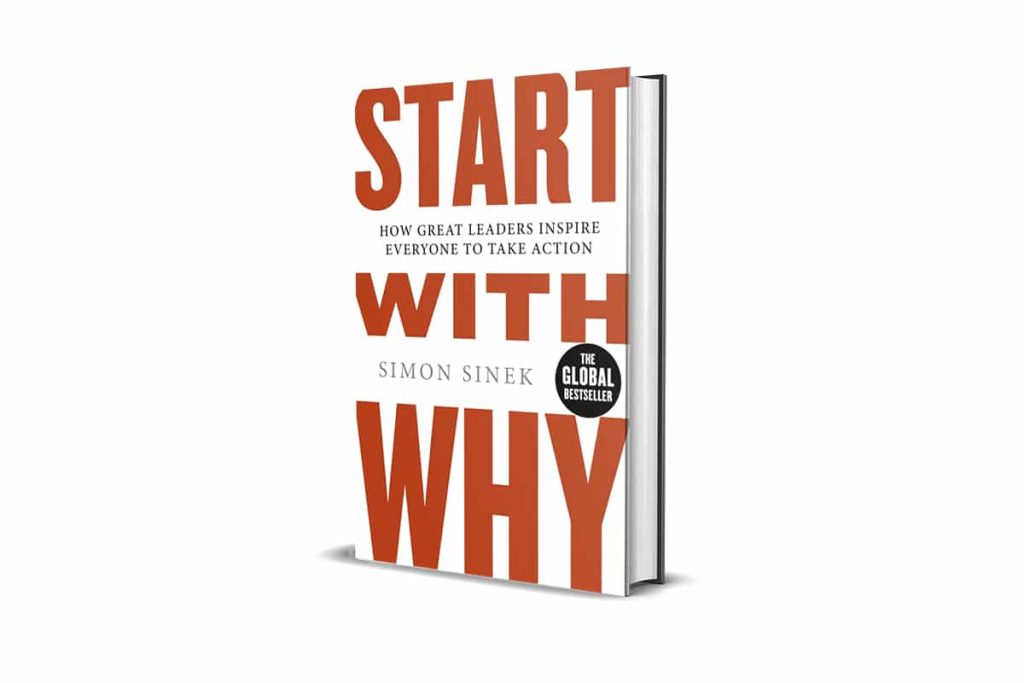Have you ever found yourself in a conversation that feels more make-or-break than most others? Maybe it was a sales pitch to a big client or a conflict resolution meeting between you and a hostile co-worker. If these sound like your scenarios (or anything in between), I’ve got another book recommendation for you. Let’s dive into Crucial Conversations, one of the best books about handling tough conversations well.
Joseph Grenny, Kerry Patterson, Al Switzler, and Ron McMillan’s Crucial Conversations offers a solid lifeline for anyone who needs to better deal with crucial moments—times when emotions run high, stakes are significant, and opinions clash. Let’s examine interpersonal dynamics and emerge with the tools to handle crucial conversations with finesse.
Crucial Conversations Summary
Crucial Conversations’ goal is simple: to help people effectively deal with high-stakes discussions. The book defines crucial moments based on three criteria: when emotions are strong, opinions differ, and outcomes matter. For many of us, these moments are pivotal, personally and professionally.
The book has four authors (more on them later). In it, they stress the significance of mastering crucial conversations for achieving goals, fostering relationships, and driving collaboration. They show how balanced and mindful dialogue can become the cornerstone of better teams, fewer misunderstandings, and better-shared outcomes. It teaches us to create open, honest communication to promote understanding and informed decisions.

One of the key skills Crucial Conversations teaches is dealing with common barriers to dialogue. Some of the key challenges it talks about are silence, violence, and deceptive narratives. The book presents a framework for staying focused, creating safe spaces, and aligning purposes.
One important skill I learned in this book is the power of separating facts from interpretations and using empathetic listening to change how you communicate. That transformation doesn’t just apply to what you say and how you receive information from others— a skill many people ignore when handling crucial conversations.
The best tool for emotional management in these high-stakes conversations from the book is the “ABC” approach. It stands for acknowledging, breathing, and choosing. This technique helps you regain composure and steer conversations toward productive ends.
Many real-world examples illustrate the application of these strategies, from corporate settings to personal relationships.
About the Authors
Joseph Grenny, Kerry Patterson, Al Switzler, and Ron McMillan are seasoned communication and organizational behavior experts. They each bring unique perspectives and experiences to the table.
Joseph Grenny is a speaker and consultant who has advised thousands of organizations worldwide on improving their communication and performance. He has a background in organizational behavior and social science. Grenny also brings a deep understanding of human dynamics to the forefront of “Crucial Conversations.”
Writer and speaker Kerry Patterson has co-authored numerous bestselling books on communication and leadership, including this one. His expertise lies in distilling complex concepts into practical strategies that individuals and organizations can apply.
Al Switzler brings depth to the book with his organizational behavior and psychology background. His research-based insights and practical experience make his contributions to “Crucial Conversations” invaluable for readers seeking tangible solutions to their communication challenges.
Ron McMillan rounds out the quartet with his leadership and organizational development expertise. His decades of experience working with diverse teams and industries add depth and richness to the book.
Crucial Conversations Chapter Summaries
Let’s take a look at each chapter and a short synopsis for each one:
- What’s a Crucial Conversation?— The authors kickstart the book by defining crucial conversations as those discussions where opinions vary, stakes are high, and emotions run strong. They emphasize the significance of mastering these conversations for personal and professional success.
- Mastering Crucial Conversations— In this chapter, readers are introduced to the concept of dialogue—the free flow of meaning between two or more people. The authors delve into the importance of creating a safe environment for dialogue and provide practical tips for achieving mutual understanding.
- Start with Heart— Here, the focus shifts to the importance of starting crucial conversations with the right intentions. Readers learn how to stay focused on what they really want, despite distractions or emotional triggers, thus setting the stage for productive dialogue.
- Learn to Look— This chapter explores the art of observation, teaching readers how to recognize when a conversation becomes crucial and emotions start to take over. By learning to read both verbal and nonverbal cues, individuals can better navigate challenging interactions.
- Make It Safe— Safety is crucial for effective dialogue. In this chapter, the authors discuss strategies for creating a safe space where all parties feel comfortable expressing their thoughts and opinions without fear of judgment or reprisal.
- Master My Stories— Our interpretations of events often shape our reactions. This chapter teaches readers how to challenge their own assumptions and stories, enabling them to approach crucial conversations with a more open and objective mindset.
- State My Path—Effective communication hinges on clarity. Here, readers learn how to express their thoughts and feelings clearly and assertively while still maintaining respect for others’ perspectives.
- Explore Others’ Paths— Understanding others’ perspectives is essential for resolving conflicts and reaching mutually beneficial outcomes. This chapter provides practical techniques for actively listening and showing genuine interest in others’ viewpoints.
- Move to Action— The final chapter focuses on turning dialogue into action. Readers learn how to reach agreements, make decisions, and follow through on commitments, ensuring that crucial conversations lead to positive outcomes and meaningful change.
Key Takeaways from the Book
There are so many lessons and applications to take away from this book. But among them all, these are some of the most “crucial” lessons I learned as a leader. Of course, you should pick up your own critical learnings if you dive into the book yourself, but these are some that should get you started:
1. Create a Safe Environment for Dialogue
One of the fundamental principles of “Crucial Conversations” is establishing conversation safety. When individuals feel safe to express their thoughts and emotions without fear of judgment or reprisal, dialogue becomes more productive and constructive. By fostering an environment of mutual respect and trust, individuals can engage in open and honest communication, leading to better understanding and resolution of conflicts.
2. Master the Art of Active Listening
Active listening is a cornerstone of effective communication, and “Crucial Conversations” emphasizes its significance. By genuinely listening to others’ perspectives, individuals can demonstrate empathy and understanding, fostering deeper connections and enhancing the quality of dialogue. Through paraphrasing and asking clarifying questions, readers learn to engage more fully with others and uncover shared interests and concerns.
3. Challenge Assumptions and Stories
Our interpretations of events often shape our reactions and behaviors in crucial conversations. The book encourages readers to challenge their own assumptions and stories, recognizing that alternative perspectives may exist. By adopting a mindset of curiosity and openness, individuals can avoid jumping to conclusions and approach conversations with greater objectivity and empathy.
4. Focus on Mutual Purpose and Mutual Respect
Successful dialogue requires a balance between achieving one’s own goals and respecting the needs and perspectives of others. “Crucial Conversations” teaches readers to focus on mutual purpose—finding common ground and shared objectives—and mutual respect—treating others with dignity and consideration. By aligning intentions and values, individuals can navigate conflicts more effectively and foster collaboration and cooperation.
5. Turn Dialogue into Action
Ultimately, crucial conversations aim to drive positive change and action. The book provides practical strategies for moving from dialogue to action, including reaching agreements, making decisions, and following through on commitments. By translating words into deeds, individuals can ensure that crucial conversations lead to meaningful outcomes and lasting solutions to complex problems.
Final Thoughts
You might know that I’m a co-founder of a marketing agency called Block Ten Strategy and a COO of Team Positive (or not). Holding these roles, I know mastering crucial conversations is necessary when leading fast-paced businesses. Since I lead remote teams most of the time, communication isn’t always easy. Zoom meetings and Slack Channels are the best places for miscommunications.
That’s why Crucial Conversations o was super helpful. It offered me several invaluable insights into fostering open communication, resolving conflicts, and driving collaboration within teams and with clients. Personally, I’ve found the emphasis on creating a safe environment for dialogue, particularly relevant, as it lays the foundation for trust and transparency essential in our industry.
Additionally, the focus on turning dialogue into action resonates deeply, aligning with our goal-oriented approach to problem-solving and decision-making. By applying the principles from this book, I believe we can enhance the quality of our interactions but also the overall effectiveness of our organization in achieving its objectives.
Other summaries to check out:




